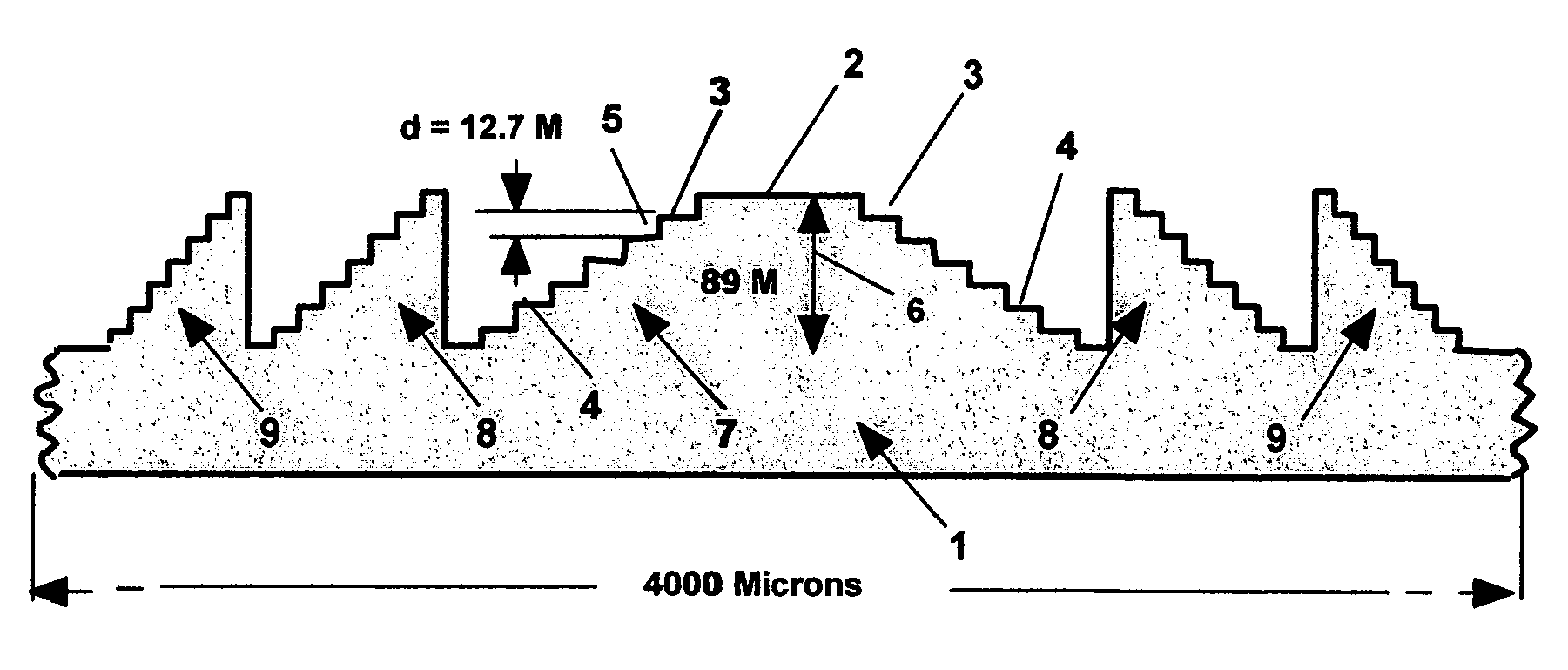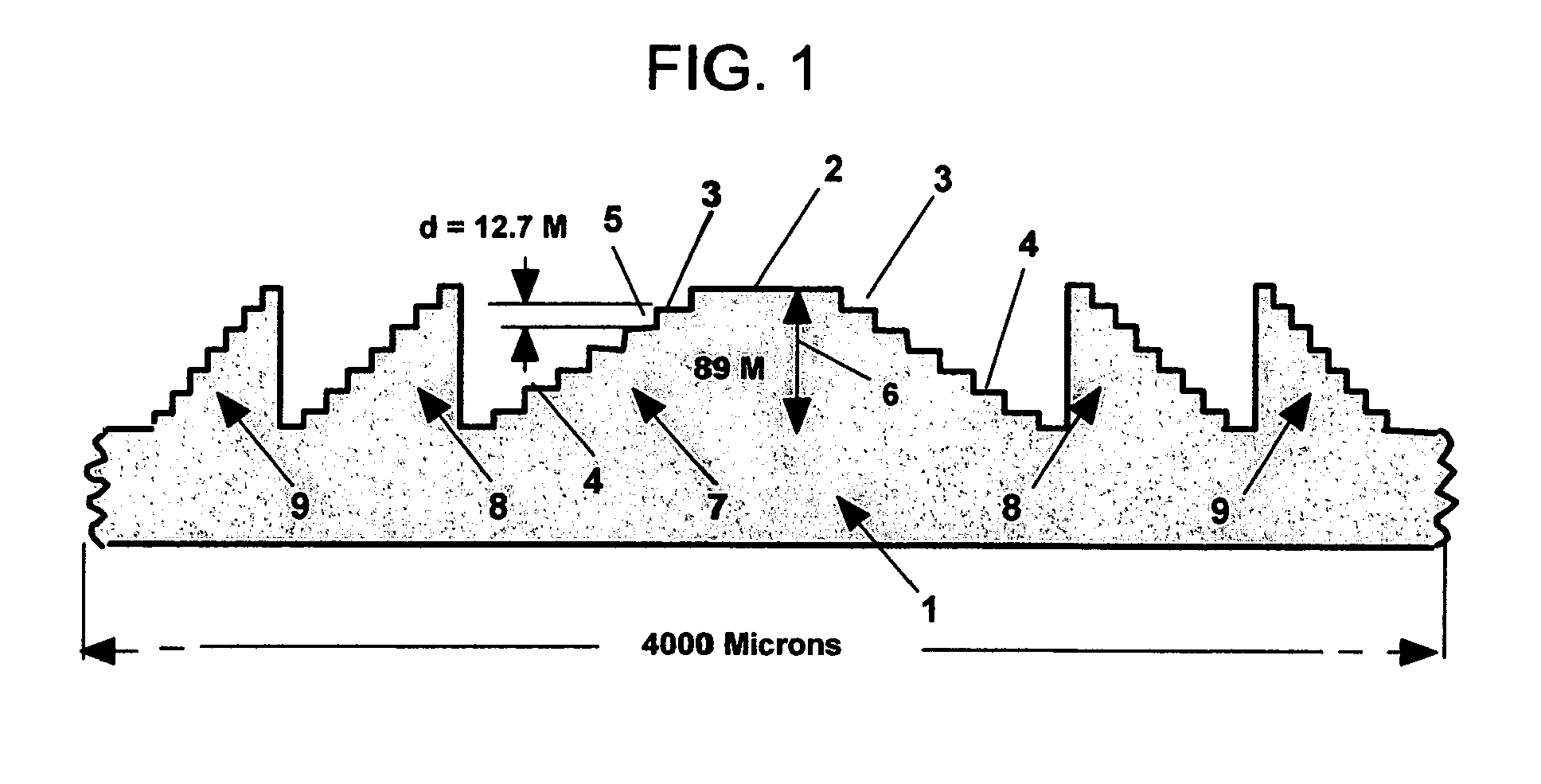Efficient wave propagation for terahertz imaging and sensing
a terahertz imaging and sensing technology, applied in the field of terahertz imaging and sensing, can solve the problems of low efficiency of optical components, high insertion loss of terahertz wave frequencies in the range of 100 to 10000 ghz, and bulky optics for terahertz imaging, so as to reduce the weight of the system and achieve 100% efficiency
- Summary
- Abstract
- Description
- Claims
- Application Information
AI Technical Summary
Benefits of technology
Problems solved by technology
Method used
Image
Examples
Embodiment Construction
[0012]The presently disclosed method and apparatus includes a method to design the terahertz optical profile in the entire terahertz spectrum. Structural design for one segment of spectrum is shown as one example of the disclosed method and apparatus.
[0013]The terahertz quasi-optical elements applicable for high frequency imaging above 5000 GHz are in micro scale and getting to the sizes, which are possible to practically process them, the same way that IC chips are processed. For these range of frequencies, micro-opto-electro-mechanical systems (MOEMS) technology as described in special issue of Optical Engineering Journal by M. E. Motamedi; ICP, as described in article entitled “SCREAM MicroElectroMechanical Systems” by N. C. MacDonald; and gray scale, as described in article “Cost-effective mass fabrication of multilevel diffractive optical elements by use of a single optical exposure with a gray-scale mask on high-energy beam-sensitive glass” by W. Daschner, P. Long, R. Stein, C...
PUM
 Login to View More
Login to View More Abstract
Description
Claims
Application Information
 Login to View More
Login to View More - R&D
- Intellectual Property
- Life Sciences
- Materials
- Tech Scout
- Unparalleled Data Quality
- Higher Quality Content
- 60% Fewer Hallucinations
Browse by: Latest US Patents, China's latest patents, Technical Efficacy Thesaurus, Application Domain, Technology Topic, Popular Technical Reports.
© 2025 PatSnap. All rights reserved.Legal|Privacy policy|Modern Slavery Act Transparency Statement|Sitemap|About US| Contact US: help@patsnap.com



